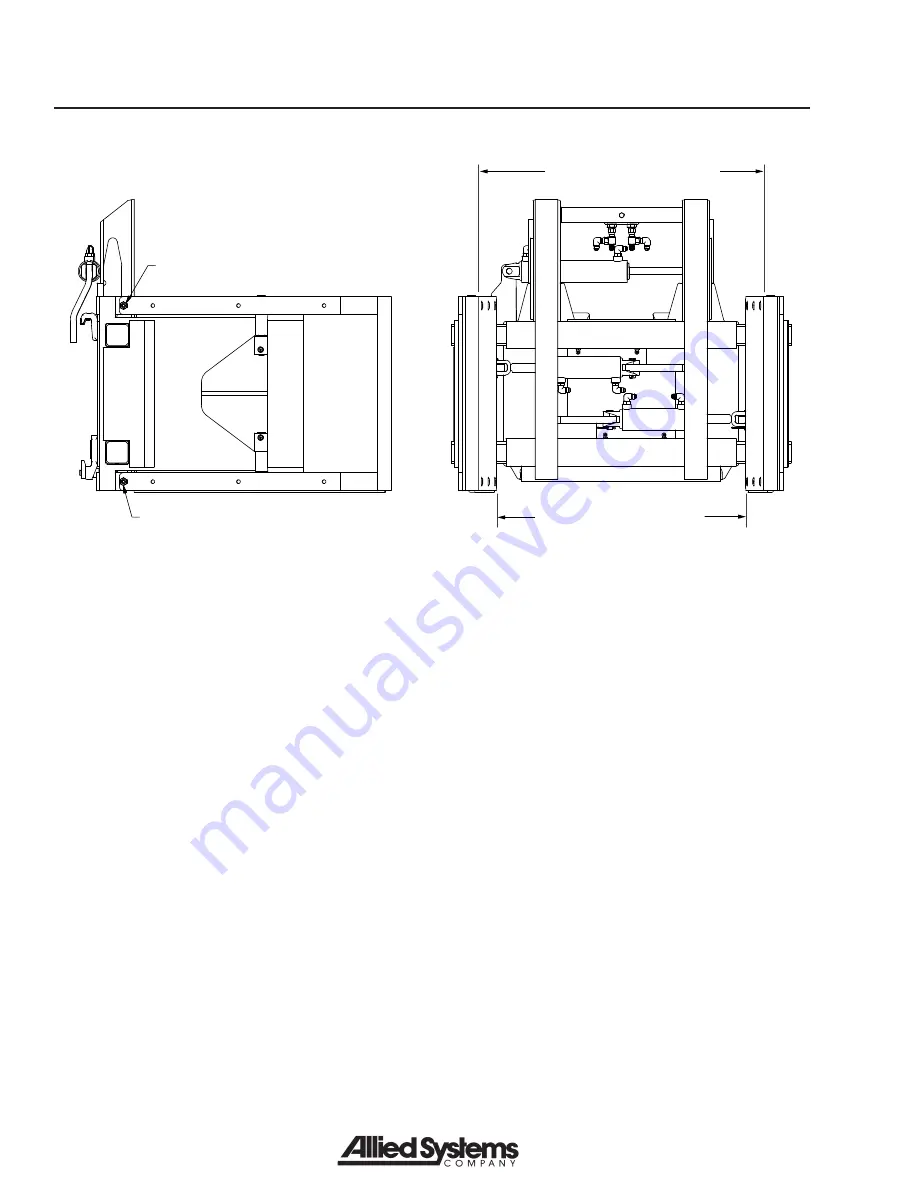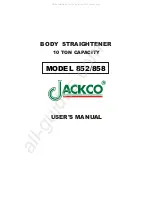
18
45-034, REV. 5/18
7. To decrease camber negatively, add one or more
spacer(s) between the pad and the upper platen
support.
8. Use existing capscrews only if one spacer is used. If
two or three spacers are used use P/N Y96G-0820
capscrew.
9. As the clamp arms and slides wear it may be neces-
sary to increase the positive camber.
5.12 Toe Adjustment
1. The term toe adjustment refers to adjusting the
difference in the distances between the front edge
and the rear edge of the contact pads.
2. Toe out, the preferred configuration, means that the
front edges are farther apart than the rear edges.
3. Toe in means that the front edges are closer
together than the rear edges.
4. To adjust the toe out, first loosen the lock nuts and
then screw the adjustment screws out (counter-
clockwise) for greater toe out, in for less. Be sure
to adjust both the top and bottom adjustment screws
found on each platen support. (Figure 5-9)
5.13 Rotating Contact Pads
1. As the contact pads wear it may be necessary to
rotate or replace them. Pad surfaces may wear
uneven, more or less, depending on the distribu-
tion of weight in the loads.
2. Before rotating, check flatness and deflection of the
pad. The pads surface flatness should not vary more
than 1/8 inch. The horizontal and vertical deflection
of the pad should not be more than 1/4 inch.
3. Pads can be rotated left to right.
Adjustment Screw
Adjustment Screw
Front Edge/Toe Out
Rear Edge/Toe Out
Figure 5-9, Camber and Toe Adjustment


































